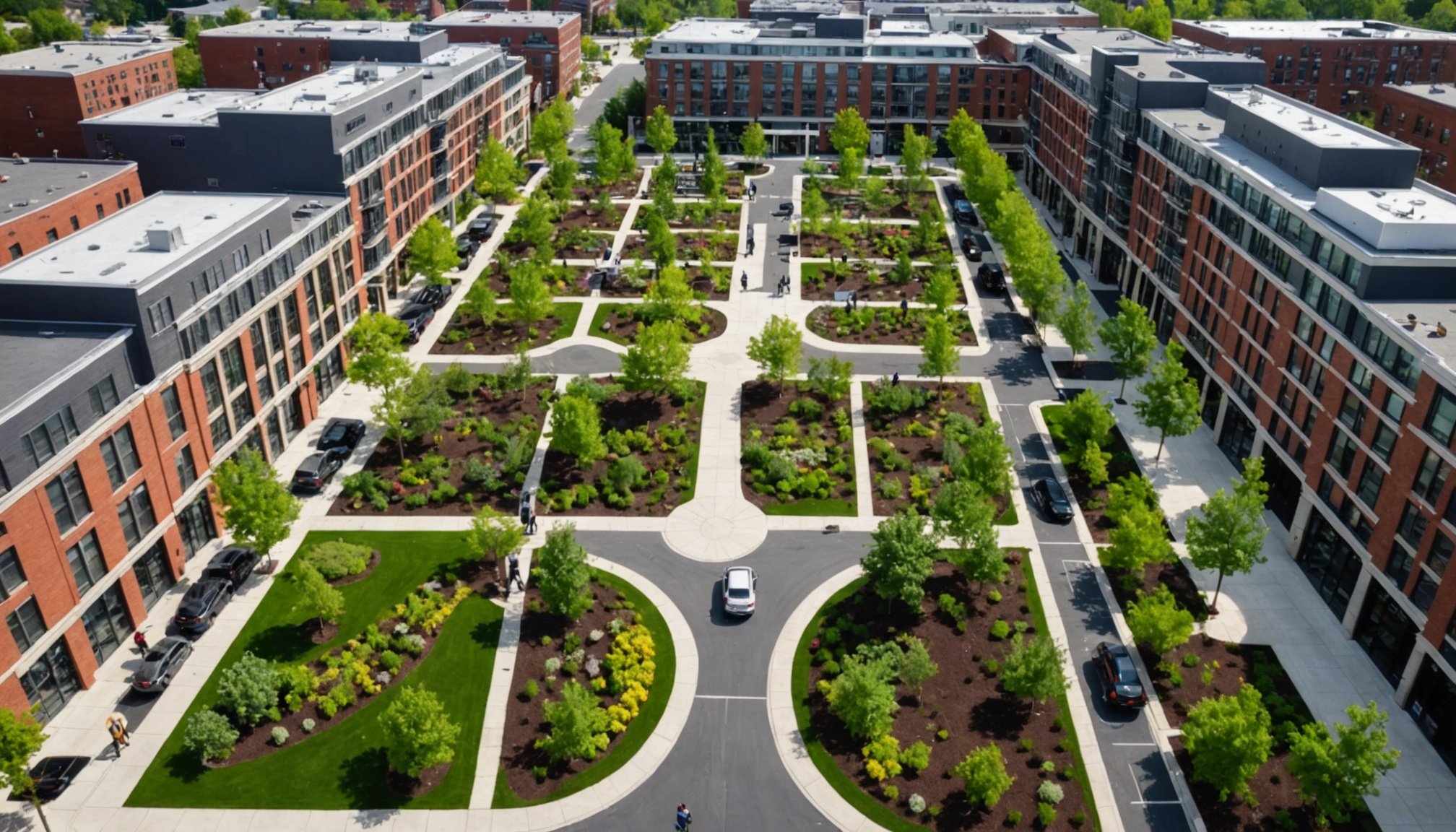Effective Architectural Design in Mixed-Use Developments
Blending architectural design with community needs is pivotal in mixed-use developments. These spaces offer the unique capability of integrating public and private areas, enhancing social interaction. A successful architectural design nurtures connections and enriches the experience for both residents and visitors by seamlessly connecting different spaces. With increasing urbanization, flexible designs accommodate various community needs efficiently, adapting to changes over time.
One prominent aspect of architectural design in mixed-use spaces is the incorporation of community spaces. These spaces promote interaction and a sense of belonging, vital for healthy community dynamics. When public and private realms are effectively integrated, a harmonious balance is achieved, allowing individuals to engage and interact in shared environments without compromising privacy.
This might interest you : Revolutionizing UK Rural Housing: Unlocking the Benefits of Modular Construction
A flexible design is also critical to respond to diverse and evolving community needs. This consideration enables the development to cater to changing demographics and activity preferences, maintaining its relevance and utility.
Case studies provide insightful examples of successful implementations. Projects that prioritize synergy between architecture and community often see enhanced social cohesion and economic growth. By examining these cases, developers can glean best practices in architectural design, ensuring mixed-use developments do not merely serve a functional purpose but also elevate the living and communal experience.
In the same genre : Breathing New Life into Neglected Urban Spaces: Innovative Strategies for Revamping Abandoned Areas
Community Engagement Strategies
Incorporating effective community engagement strategies is essential in shaping successful mixed-use developments. Collaboration with stakeholders aligns project goals with community aspirations, fostering a sense of ownership among residents. Implementing planning techniques such as workshops and surveys provides channels for resident involvement, ensuring their voices are heard during the design process. This inclusive approach promotes greater acceptance and satisfaction once the project is completed.
Building stakeholder collaboration involves establishing partnerships with local authorities, businesses, and community groups. These partnerships pave the way for shared responsibilities and resources, enhancing the project’s viability and sustainability. When communities are actively engaged in decision-making, it strengthens trust and commitment, setting a precedent for long-term success.
Examples of successful community engagement can be seen in projects such as ‘Project Evergreen’, where resident participation was encouraged through regular town hall meetings. This involvement led to substantial economic growth and revitalization as businesses thrived in response to community-centric designs. These success stories are testament to the potential of strategic engagement, illustrating its pivotal role in sustainable development.
Engaging communities effectively not only enhances the living experience but also fosters economic resilience. By prioritising collaboration and open communication, mixed-use developments can thrive, ultimately benefiting both developers and residents.
Economic Planning for Sustainability
Creating financially sustainable mixed-use developments requires strategic economic planning. These projects play a pivotal role in boosting local economies, as they attract businesses and residents alike, creating a vibrant community. To ensure financial viability, developers must integrate diverse revenue streams and consider long-term operational costs alongside initial investments.
A critical aspect of economic planning is aligning development goals with community needs. By focusing on mixed-use spaces that resonate with local demographics, developers can enhance occupancy rates and, consequently, economic success. Engaging with community stakeholders during the planning phase helps identify these needs early, facilitating a tailored approach that maximizes economic potential.
Best practices in fostering financial stability include performing feasibility studies and analyzing market trends to anticipate shifts that could affect the development’s profitability. Additionally, integrating sustainable design elements not only reduces long-term expenses but also attracts eco-conscious residents and businesses, supporting a green economy.
Mixed-use developments can dramatically contribute to local economic growth through job creation, increased tax revenues, and expanded consumer bases for local businesses. By carefully orchestrating their economic strategies, developers ensure that these projects do not merely function as static infrastructure but as dynamic, thriving ecosystems that sustain themselves and benefit surrounding communities.
Case Studies of Successful Mixed-Use Developments
Exploring case studies illuminates best practices and strategies in mixed-use developments. These projects highlight the effectiveness and importance of thoughtful planning and design.
Notable Examples in Urban Context
Successful urban mixed-use developments have redefined city landscapes, prioritizing community needs and sustainable design. Projects like Hudson Yards in New York exemplify how integrating diverse functionalities can transform an area. Such developments elegantly blend residential, commercial, and recreational spaces, creating vibrant, inclusive environments.
Impact on Local Economies
The positive economic impact of successful mixed-use developments cannot be overstated. These projects often lead to economic revitalization, attracting businesses and increasing property values. For instance, King’s Cross in London has evolved into a bustling hub, significantly boosting the local economy by generating jobs and attracting tourism.
Community Benefits and Feedback
Community feedback from well-designed mixed-use developments often reflects heightened satisfaction. Residents appreciate the strong community feel and convenience of living, working, and playing in a harmoniously integrated space. For example, the Santana Row project in San Jose, California, has received positive testimonials for fostering a vibrant community atmosphere and providing easy access to amenities. These case studies underscore the transformative power of integrating holistic architectural and community-focused strategies.
Best Practices for Enhancing Synergy
Community synergy is essential for the success of mixed-use developments, and employing effective development strategies can ensure thriving, harmonious environments. One key method to foster collaboration among diverse stakeholders is to establish regular communication channels. These can include scheduled forums or digital platforms for ongoing dialogue. Such tools enable feedback and enhance community synergy by ensuring that all voices are considered.
Ongoing assessment and adaptation are crucial aspects of any development strategy. Continually evaluating the project’s impact through surveys or town hall meetings allows developers to adjust plans based on evolving needs. This iterative approach maintains the relevance of mixed-use spaces and addresses any arising community concerns promptly, fortifying trust and engagement.
Best practices in measuring success involve implementing frameworks that track not only economic outcomes but also social and environmental impacts. For example, setting clear benchmarks and using indicators such as resident satisfaction, local economic growth, or reduced carbon footprints can provide comprehensive insights into a project’s performance. Adopting these practices ensures that developments are not only financially sustainable but also enriching for the communities they serve, reinforcing the overall community synergy. This dedication to integration keeps projects vibrant and aligned with stakeholder aspirations.





